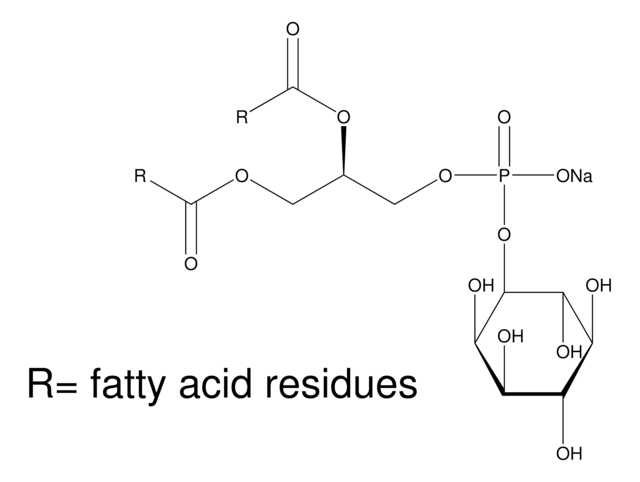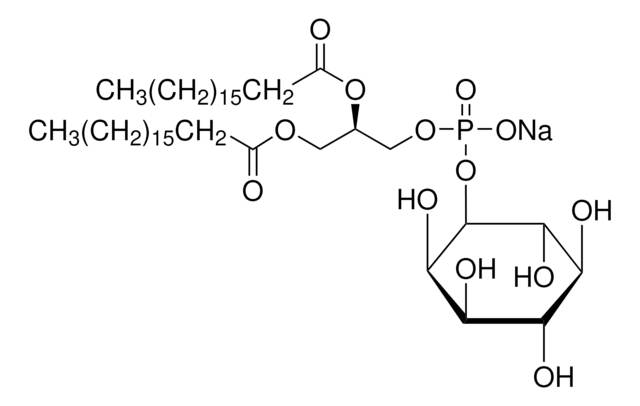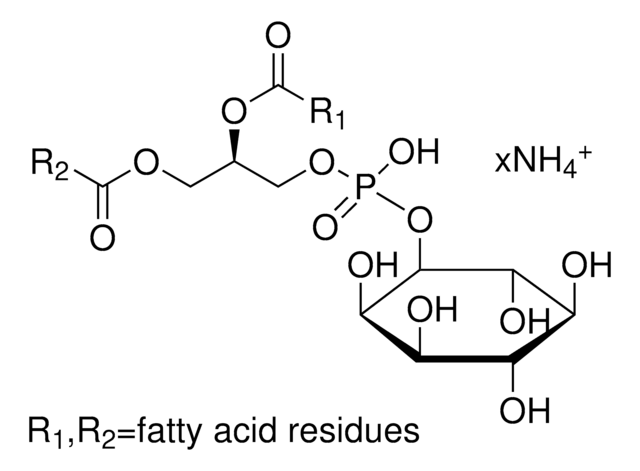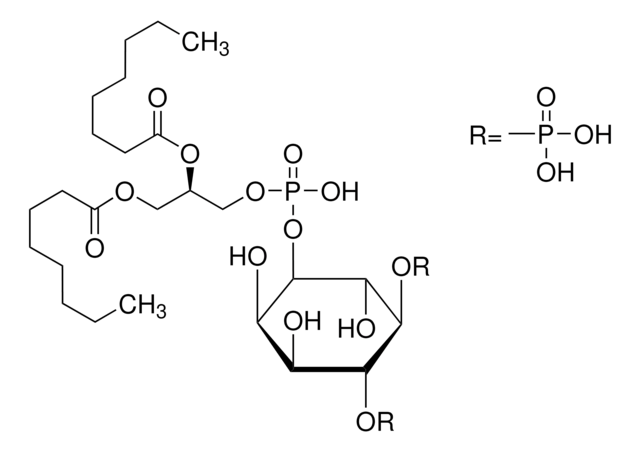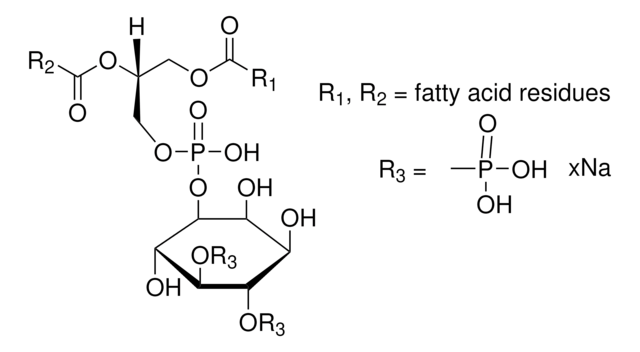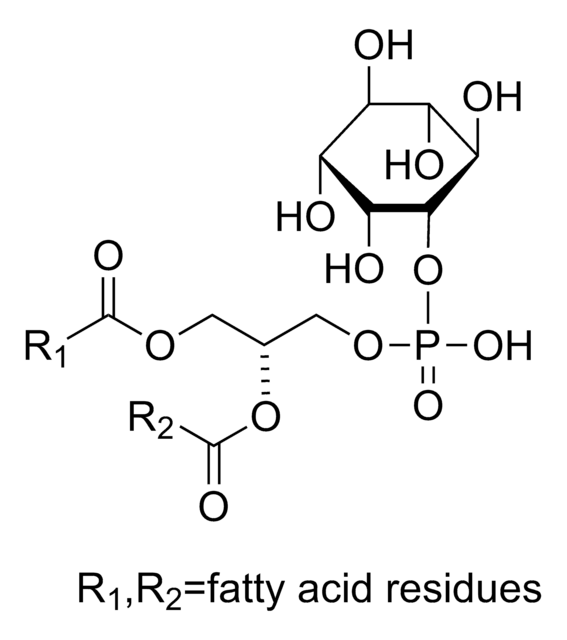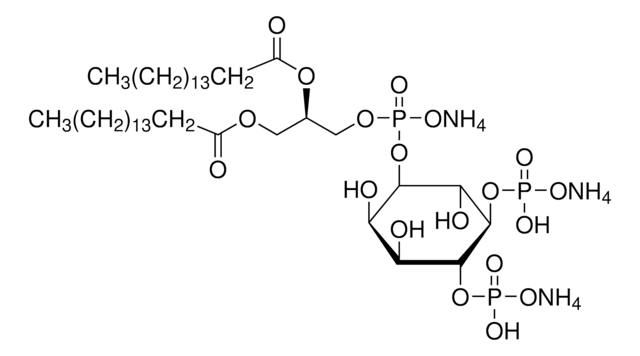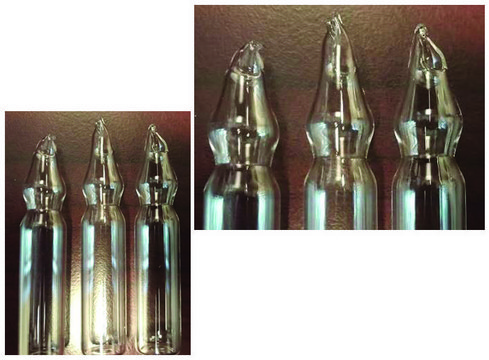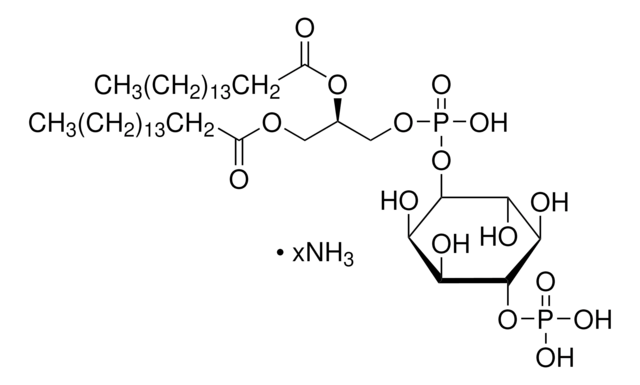P9638
L-α-Phosphatidylinositol 4-monophosphate sodium salt
≥98%
Synonym(s):
1,2-Diacyl-sn-glycero-3-phospho-(1-D-myo-inositol 4-phosphate) sodium-potassium salt, Diphosphoinositide sodium salt, PIP, PtdInsP
Sign Into View Organizational & Contract Pricing
All Photos(1)
About This Item
UNSPSC Code:
12352207
Recommended Products
Assay
≥98%
form
powder
solubility
H2O: soluble
shipped in
dry ice
storage temp.
−20°C
Looking for similar products? Visit Product Comparison Guide
Biochem/physiol Actions
Phosphorylated phospholipid membrane component, precursor of inositol phosphates. Formed in brain membranes from phosphatidylinositol by phosphatidylinositol 4-kinase.
Features and Benefits
This compound is featured on the Phosphoinositide Kinases page of the Handbook of Receptor Classification and Signal Transduction. To browse other handbook pages, click here.
Storage Class Code
11 - Combustible Solids
WGK
WGK 3
Flash Point(F)
Not applicable
Flash Point(C)
Not applicable
Personal Protective Equipment
dust mask type N95 (US), Eyeshields, Gloves
Regulatory Information
新产品
Choose from one of the most recent versions:
Already Own This Product?
Find documentation for the products that you have recently purchased in the Document Library.
C A O'Brian et al.
FEBS letters, 214(2), 339-342 (1987-04-20)
Protein kinase C(PKC) is a Ca2+- and phospholipid-dependent protein kinase which can be activated by diacylglycerol, a product of polyphosphoinositide hydrolysis. In this report, we show that the polyphosphoinositides L-alpha-phosphatidylinositol 4-monophosphate (PI 4P) and L-alpha-phosphatidylinositol 4,5-diphosphate (PI 4.5DP) can serve
L Raptis et al.
Journal of virology, 63(2), 753-758 (1989-02-01)
Polyomavirus middle tumor antigen (mT) was expressed in a line of mouse NIH 3T3 cells under control of the dexamethasone-regulatable mouse mammary tumor virus promotor. Contrary to rat F111 cells which were rendered anchorage independent by mT expression alone (L.
Siavash Fazel Darbandi et al.
Cell reports, 31(2), 107495-107495 (2020-04-16)
Tbr1 is a high-confidence autism spectrum disorder (ASD) gene encoding a transcription factor with distinct pre- and postnatal functions. Postnatally, Tbr1 conditional knockout (CKO) mutants and constitutive heterozygotes have immature dendritic spines and reduced synaptic density. Tbr1 regulates expression of
Our team of scientists has experience in all areas of research including Life Science, Material Science, Chemical Synthesis, Chromatography, Analytical and many others.
Contact Technical Service